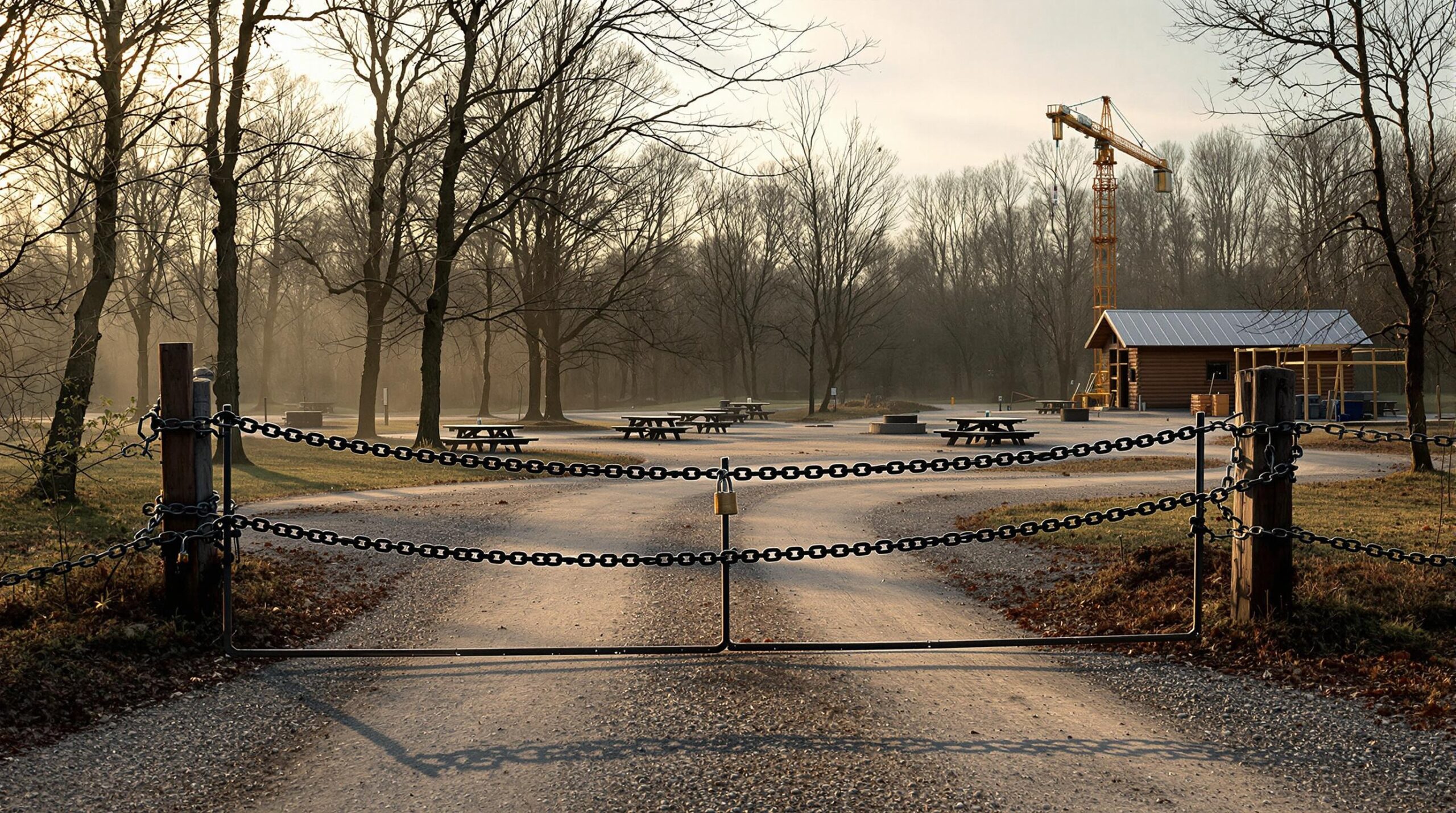A federal pullback and a private push are set to reshape South Dakota’s camping landscape this year. The U.S. Army Corps of Engineers will shut down several of its recreation sites May 1 because it lacks the people and money to run them, while a Rapid City KOA is pouring new dollars into a four-season facility scheduled to open before the end of 2025.
The Corps disclosed the closures in April, citing staffing and resource shortages that make it impossible to keep certain campgrounds, visitor centers and day-use areas safe and clean. Details of the announcement include the North Shore Campground near Fort Thompson, the Oahe and Fort Randall Visitor Centers, and multiple comfort stations and vault toilets that will be locked through the season.
USACE officials said the move is meant to protect guests, safeguard environmental resources and keep hydropower and dam operations on the Missouri River Basin running smoothly. To stretch what staff remains, routine safety patrols and janitorial rounds will also be trimmed.
Communities that rely on shoulder-season travelers could experience a loss of overnight stays, boat launches and souvenir sales as the Corps focuses on essential services only.
Operators in the private sector can take lessons from the shutdown. Cross-training employees to handle check-ins, light maintenance and basic patrols keeps doors open when headcount dips. Building a roster of retirees, work-campers or on-call contractors adds a labor cushion for holiday weekends. Remote cameras and water-level sensors could let smaller teams supervise bigger footprints, while tiered maintenance calendars could help prioritize restrooms, trash and hazard removal over cosmetic work until full crews return.
Clearly communicating any service reductions—through push-notification apps, website banners or gate signage—can also help manage expectations and protect guest satisfaction.
While the Corps pares back, private operators are sprinting to capture demand. In October 2024, the Rapid City/Black Hills KOA unveiled its plan for a new registration and general-store complex designed to keep campers, RVers and corporate retreat guests on site year-round. According to Recreational Adventures Co., the project’s developer, the facility is scheduled to open before the end of 2025.
The building, slated for completion late next year, will double as a larger store and upgraded check-in lobby and will add restrooms, showers, a laundry room and a dedicated kitchen. Meeting spaces and modern tech amenities aim to draw team-building events, family reunions and special celebrations even during the snow months.
For owners weighing similar investments, flexible floor plans with movable walls and multiple utility hookups allow a single structure to morph from store to event hall to off-season storage. Using durable materials such as metal roofing and composite decking could cut lifetime repair costs and speed winter turnovers. Thick insulation, reliable climate control and strong Wi-Fi keep shoulder-season guests comfortable and connected, while high-margin grab-and-go food or branded apparel in the store captures more on-site spending. Roughing in conduit for future EV chargers or solar arrays during construction is far cheaper than retrofitting later.
Although some federal sites are closing because of staffing and resource limitations, overall state and local spending on recreation and culture has risen in recent years. Expenditures increased from about $38.6 billion in 2019 to $41.7 billion in 2022.
For campground and RV-park operators, the immediate playbook is clear—marshal flexible staffing, lean on technology and design facilities that can generate revenue 12 months a year. If the Corps secures new funding and reopens its properties, demand could snap back quickly; until then, well-positioned private parks stand to pick up the slack.
Careful planning and adaptation may allow both public and private campgrounds to meet the changing demands of travelers in the seasons ahead.


